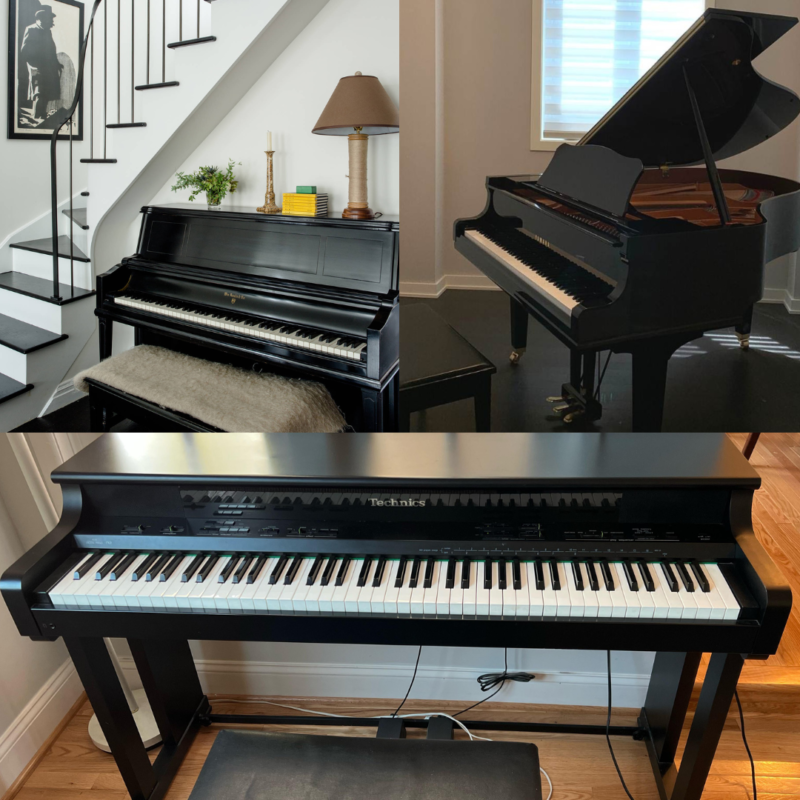Pianos are majestic. They elevate any room and turn even the most basic plinking into a magical moment. But when it’s time to move one? Suddenly, that beautiful instrument becomes a 500-pound puzzle of logistics, sweat, and potential heartbreak.
If you’re here, you’re probably Googling things like “how to move a piano safely” or “do I need movers for a piano?” Relax—you’re in the right place. While moving a piano isn’t exactly child’s play, with the right prep, tools, and a sprinkle of patience, you can get the job done. Here’s how.
Step 1: Know Your Piano (and Respect Its Weight)
First things first—what kind of piano are you moving? Is it an upright piano that’s compact yet deceptively heavy, or a grand piano that’s, well, grand in both size and complexity? Knowing your piano type will help you plan accordingly.
- Upright Pianos: Easier to maneuver, but still hefty. These range from 300 to 800 pounds.
- Grand Pianos: Larger, heavier (up to 1,200 pounds!), and trickier to navigate due to their shape.
- Digital Pianos: Portable and a relative breeze to move. If you’re dealing with this, congratulations—you’ve got the easiest job of all.

Step 2: Assemble Your Piano-Moving Dream Team
Spoiler alert: You can’t do this alone. Moving a piano requires at least 3–4 strong individuals. Friends, family, neighbors—whoever you can convince to lend a hand.
Assign roles:
- One or two people to guide and lift.
- One person to scout the path ahead.
- An extra pair of hands to keep things stable—because tipping over a piano isn’t on anyone’s bucket list.
Step 3: Gather the Right Tools
Here’s what you’ll need for a safe move:
- Heavy-duty moving straps to secure the piano.
- Dollies or a piano skid board to roll it around.
- Moving blankets and padding to protect the finish.
- Tape or shrink wrap to secure loose parts.
Pro Tip: For grand pianos, a piano board is a must. It provides extra stability and protection during transport.
Step 4: Measure Twice, Move Once
Pianos are large and clunky, and your doorways, staircases, and hallways might not be as spacious as you think. Measure everything: the piano, the doorframes, the staircases, and even the moving truck.
Clear the path of any obstacles beforehand—your piano shouldn’t be playing bumper cars with your furniture.
Step 5: Lift With Care (and Teamwork)
When lifting the piano, keep it upright to protect its internal components. Use the straps to hold it steady, and take it slow—this isn’t a race.
If stairs are involved, brace yourself (literally). Position one person at each end, and move step by step. For grand pianos, remove the legs and pedals before lifting. Wrap each piece separately and secure it in the truck.
Step 6: The Grand Finale—Transporting the Piano
Once your piano is safely in the moving truck, secure it against the wall with straps. Use padding to absorb shocks during transit, and avoid stacking anything on top of it.
After reaching your destination, follow the same careful process to unload and place the piano in its new spot.
When to Call the Pros
Here’s the thing—moving a piano is not for the faint of heart. If the idea of maneuvering 800 pounds of wood and strings gives you pause, don’t hesitate to call in the experts.
At Eagle Moving and Storage, we specialize in moving pianos of all shapes and sizes. With our experience and equipment, we’ll take care of everything while you kick back and relax.
Key Takeaways
- Moving a piano isn’t impossible, but it requires planning, teamwork, and the right tools.
- Protect both the piano and your home with padding, careful lifting, and strategic positioning.
- When in doubt, hire professionals—you’ll save time, effort, and potential repair costs.
Need help moving a piano? Contact us today for a stress-free move!
